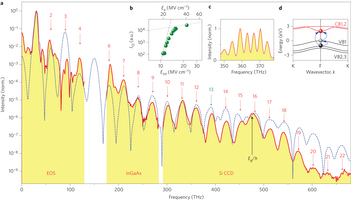By Sheng Liu
Note: Most of the following materials are cited from the material distributed in the meeting
On June 2, 2014, Department of Defense (DoD) announced a Request for Information (RFI) Institutes for Manufacturing Innovation, RFI-RQKM-2014-0022.
The DoD wishes to consider input from Industry and Academia as part of an effort to select and scope the technology focus areas for future Institutes for Manufacturing Innovation (IMIs). These IMIs will be regionally centered Public Private Partnerships enabling the scale-up of advanced manufacturing technologies and processes with the goal of successful transition of existing science and technology into the marketplace for both Defense and commercial applications. Each Institute will be led by a not-for-profit organization and focus on one technology area. The Department is requesting responses which will assist in the selection of a technology focus area from those currently under consideration, based upon evidence of national security requirement, economic benefit, technical opportunity, relevance to industry, business case for sustainability, and workforce challenge.
The Technical Focus Areas currently under consideration are:
-
Flexible Hybrid Electronics
-
Photonics
-
Engineered Nanomaterials
-
Fiber and Textiles
-
Electronic Packaging and Reliability
-
Aerospace Composites
Therefore, optics and photonics will be competing directly with other technology areas for a possible DoD-sponsored IMI.
The opportunity to form a new IMI for photonics would benefit the entire industry by focusing federal and private sector investment and innovation through collaboration. The DoD is committing $70 million in federal funds with a minimum 1:1 non-federal cost share. Securing an IMI would confirm the importance of optics and photonics to the future of American manufacturing and the American work force, and it would continue to reinforce the foundational role of optics and photonics in virtually all sectors of the economy.
Therefore, active responses from optics and photonics communities to RFI is very important!!!
Wednesday
THz Science and Spectroscopy
While THz spectroscopy has served as an extremely useful tool for probing carrier dynamics for decades, it still surprises us today how far THz technology can extend to. There are two sections that researches presented their work on the generation of strong THz field (SW1F) and how THz are used for spectroscopy and sensing (SW3F).
Rupert Huber group from University of Regensburg continue surprises us how the strong THz pulses (multiple 10 MV/cm) can perturb electronic structure. After publishing the work of using 72 MV//cm THz pulse to drive coherent interband polarization combined with dynamical Bloch oscillations in semiconducting gallium selenide (generating phase-stable high-harmonic transients, covering the entire terahertz-to-visible spectral domain between 0.1 and 675 THz), today they present photoluminescence of GaAs driven by THz pulses which is only 1/400 photon energy of the bandgap of GaAs.

(this figure comes from http://www.nature.com/nphoton/journal/v8/n2/full/nphoton.2013.349.html)
Tobias Kampfrath from Fritz Haber Institute reviewed the progress of strong THz radiation resonantly and sensitively probing electron transport, spin precession and ion vibration in solids in the past few years. Strong THz radiation indeed serves as a powerful tool for us to explore the most fundamental physics.
Posted: 12 June 2014 by
Sheng Liu
| with 0 comments